GREAT MUSIC FIGURES

Mir Mohsun Navvab (1833-1918) — astronomer, literary critic, painter, calligrapher, and musicologist.
Mir Mohsun Navvab's famous musical treatise Vuzuhul-Arqam was first published in Baku in 1913 (his work Kashful-Haqiqati-Masnavi, dedicated to music, is also known). In this treatise, Mir Mohsun investigates the origin of some dasgah's (The vocal-instrumental whole performed by the mugam trio) and the roots of their names, the connection of mughams with poetic texts, the relationship between the performer and the listener, their optimal location in terms of acoustics. For the first time, the Nawwab uses the term dasgah, referring to the six dasgahs known in Karabakh at that time: Rast, Mahur, Shahnaz, Rahavi, or Rahab, Chahargah, and Nava. According to the Nawwab, the composition of the dasgah often depends on the taste and ability of the performer. In this work, the scientist mentions 82 songs and mugams performed by Karabakh musicians. Mir Mohsun investigates the origin of several mughams and the etymology of their names. Thus, he connects the names of Azerbaijan, Nishapur, Zabuli, Baghdadi, Shirvani, Gajari, Shah Khatai and other mughams with the people who played a role in their creation and place names. Rast mugam is a spring breeze, Rahavi is a raindrop, Chahargah is a thunderstorm, Dugah is a spring, Humayun is a flight of birds, Nava is a sigh of unfortunate lovers, Mahur connects the murmur of water, Shahnazi is associated with the chirping of nightingales, Ushaggi is associated with the flight of birds, Uzzali associated with the movement of meteorites.
Navvab was also interested in mathematics, chemistry, and astronomy. He put two telescopes in his house and built a small observatory and a chemistry laboratory. In his textbook "Kifayatul-etfal", written as a textbook in 1899, he compiled tables on the location of celestial bodies and solar eclipses. The scientist conducted experiments with his students in a chemistry laboratory and checked copies provided by medieval chemists. The number of advice he gave to young people in the book of exhortations was more than 500. The ethical views of the well-known pedagogue and scientist were reflected in his books such as "Kifayatul-etfal, Nurul-Anvar" and "Pandname". Undoubtedly, Navvab made his greatest contribution to the art of Karabakh and all of Azerbaijan with his artistic creativity. We have his many watercolor paintings, book miniatures, and patterns on several buildings and mosques.
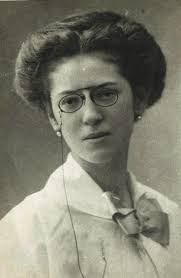
Khadija Osman gizi Gayibova (1893-1938) — an artist and one of the first female pianists of Azerbaijan.
As a result of her father's efforts, Khadija entered the St. Nina Girls' School. In addition to his secondary education, he received an excellent piano education.
However, the education of Mrs. Khadija, who lost her father, sister, and brother to tuberculosis, remains incomplete. In the next few years, Mrs. Khadija began teaching at a Russian-Muslim school for women, and in 1919 she moved to Baku with her family. After the occupation of Baku by the Soviet army, she was appointed head of the Oriental Music Department at the People's Commissariat of Education of the Azerbaijan SSR. Mrs. Khadija, considered one of the founders of the Eastern Conservatory established in those years, soon became famous for her classical mugam works performed on the piano.
From 1927-1931 she studied at the composition faculty of the Azerbaijan State Conservatory. In 1933, she was arrested and charged with counter-revolution. However, Mrs. Khadija was released three months later due to lack of evidence, soon resumed her professional activities. In 1934, she joined the research staff of the Azerbaijan State Conservatory and was commissioned to study the musical heritage of Azerbaijan.
However, in 1938, Khadija was arrested for the second time. According to the decision of the Special Troika of the KGB of the Azerbaijan SSR dated October 19, 1938, Gayibova Khadija Osman gizi was sentenced to be shot with confiscation of property for her connection with the Turkish consulate and espionage activities. The sentence was carried out one week later in Baku. In 1954, Khadija's daughter Sultanova Alangu appealed to the Ministry of Internal Affairs of Azerbaijan for information about her mother. On April 28, 1955, the investigator of the special department of the State Security Committee Menyayev stated in connection with the application of A. Sultanova: According to the decision of the Judicial Board on Criminal Cases of the Supreme Court of the Azerbaijan SSR dated February 14, 1956, Gayibova Khadija Osman gizi was acquitted and on February 29 her daughter Alangu received a document for this purpose.
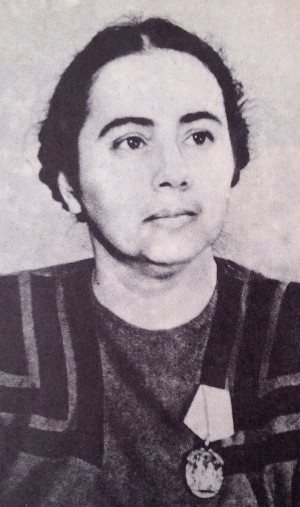
Kovkeb Kamil gizi Safaraliyeva (1907-1985) — pianist, pedagogue, professor, the first pianist-pedagogue of Azerbaijan, methodologist.
In 1915, Kovkab entered the Marinski Secondary School. At the same time, she also took music lessons in piano class. In 1916 she continued her education at the music college.
In 1926, Kovkab Safaraliyeva graduated from the Music College and, despite being very young, she was invited to work at the Turkish Women's Seminary. Here she began her first pedagogical activity. It is in this seminary that the acquaintance and joint activities of the great duo — Uzeyir and Mrs. Kovkab begin.
After graduating from the Music College, Safaraliyeva entered the piano department of the State Conservatory. She learns from valuable specialists of her time. What she learns from them, she teaches a new generation years later in this very music center. She first worked as an intern-pedagogue and then as a teacher of a special piano class. Kovkeb Safaraliyeva graduated from the Azerbaijan State Conservatory in 1932, and in 1952 became a professor at the same educational institution.
Mrs. Kovkab, who made a great contribution to the development of music education, established a secondary music school (now the Bulbul School) at the Conservatory in 1937 and was its director.
Kovkeb Safaraliyeva is the author of several scientific-methodical textbooks, a collection for piano, and articles on music.

Ashraf Hasan oglu Hasanov (1909-1983) — conductor of an orchestra, teacher, People's Artist of the Azerbaijan SSR, one of the first Azerbaijani conductors with professional education.
Ashraf Hasanov performed at the Azerbaijan State Opera and Ballet Theater Uzeyir bey Hajibeyov's "Koroglu", "Leyli and Majnun", Muslim Magomayev's "Shah Ismail", Reinhold Glière's "Shahsenam", Mikhail Glinka's "Ivan Susanin", Giuseppe Verdi's "La Traviata", "Aida", "Rigoletto", "The Tsar's Bride" by Nikolai Rimsky-Korsakov and "Snow Maiden", "Carmen" by "George Bizet", "Comedians" by Rucero Leonkovallo, "Aleko" by Sergei Rachmaninoff, "Mermaid" by Alexander Dargomyzhsky, "Peter Tchaikovsky", "Iolanta", "Mozart and Salieri", Nikolai Rimsky-Korsakov's "Shahrizad" and Igor Morozov's "Doctor Aybolit".
He conducted the symphony orchestra under the Azerbaijan Radio Committee.

Lyudmila Karagicheva-Bretanitskaya (1920-2015) — musicologist, pedagogue, honored art worker of the Republic of Azerbaijan, candidate of art history.
L.Karagicheva is one of the leading figures of Azerbaijani musicology. The main theme of the scientific activity of the musicologist, who has a great creative ability and range, is the work of Gara Garayev. Attention is drawn to her works on "Gara Garayev", "Garayev ballets", "African musical folklore in Garayev's ballet" Lightning Roads", symphonic engraving "Don Quixote" and other works by Garayev. Lyudmila Karagicheva was one of the first musicologists to give lectures on contemporary art to her students.
Her monograph on the composer and conductor Niyazi and articles on various topics related to Azerbaijani music was also published. She worked at the Conservatory before moving to Moscow (1988).
Adelaide (Adila) Irza gizi Mammadova (1922-2015) — musician, scientist, pedagogue, public figure.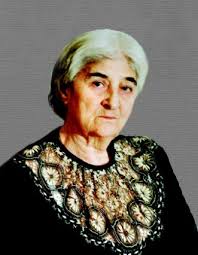
After graduating from high school, she studied at the Tbilisi Law School under the People's Commissariat of Justice of Georgia and began her career. In 1977, when the Memorial Museum of Bulbul, the founder of Azerbaijan's professional vocal art, was established, Adelaide Mammadova was appointed its director. For more than 40 years, Adelaide has been a protector and active promoter of Bulbul's legacy. Due to her hard work, the Bulbul Memorial Museum, one of the first house-museums of the republic, contains more than 6,000 documents reflecting the life and work of the famous artist, including posters, letters, and editions of opera performances, as well as his cultural, materials related to scientific, pedagogical and social activities. Due to her efforts, Bulbul's memorial house-museums were established in Baku and Shusha. In addition to being the director of the museum, she was also a tireless researcher of Bulbul's rich heritage. Adelaide Mammadova was the author of many books and articles dedicated to the scientific activity and multifaceted creativity of the prominent vocalist. Unfortunately, after the occupation of Shusha by the Armenian armed forces in 1992, Bulbul's memorial house-museum was savagely destroyed.
Ms. Adelaide's work was highly appreciated and she was awarded the Order of Glory, one of the highest awards of the Republic of Azerbaijan, and the Honorary Diploma of the President of the Republic of Azerbaijan.
Azad Khamza oglu Aliyev (1928-1994) — violinist, People's Artist of Azerbaijan.
In 1951-1971 he was a member of the Azerbaijan State String Quartet.
He was the first performer of works for violin by Azerbaijani composers. His repertoire includes works by Russian and Western European composers. He was a laureate and diploma winner of international competitions as part of a quartet.
From 1970-1976 he was the concertmaster of the Azerbaijan State Symphony Orchestra, and since 1951 — the teacher of the Azerbaijan State Conservatory.
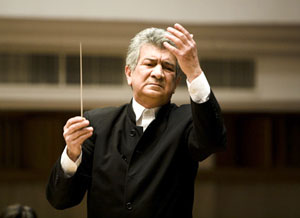
Rauf Janbakhish oglu Abdullayev (1937) — conductor of the Azerbaijan State Philharmonic Symphony Orchestra, professor, People's Artist of Azerbaijan.
In 1965-1984 he was the chief conductor of the Azerbaijan State Opera and Ballet Theater named after M.FAkhundov, in the 70s he was one of the founders of the Modern Music Chamber Orchestra and BAKARA ensemble since 1984 artistic director and chief conductor of the Azerbaijan State Symphony Orchestra named after Hajibeyov, artistic director and chief conductor of the Ankara State Opera and Ballet Theater in 1991-1994, participant of international music festivals and projects. For more than 20 years, he has conducted about 30 opera and ballet performances (both classical and modern repertoire) as the theater's chief conductor. He has conducted famous bands in many countries (Russia, Germany, the Netherlands, Switzerland, France, Turkey, Egypt, USA, Italy, UAE, etc.). His repertoire includes works by many Western European, Russian and Azerbaijani composers.
In 1970 he was awarded the title of Honored Art Worker of the Azerbaijan SSR, in 1979 the Honorary Decree of the Supreme Soviet of the Azerbaijan SSR, twice the Best Conductor of the Year in Turkey for his work as a conductor at the Ankara Opera and Ballet Theater from 1993 to 1997. In 2017, he was awarded the Order of Independence.
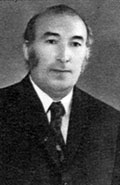
Nazim Asadulla oglu Rzayev (1925-2007) — Azerbaijani conductor, professor.
Nazim Rzayev was the conductor of AOBT(Academic Opera and Ballet Theater) in 1958-1960, and in 1960-1963 he had an internship at the Bolshoi Theater in Moscow. From 1964 he was the artistic director and chief conductor of the Azerbaijan State Chamber Orchestra. In the last years of his life, he worked in Turkey. He conducted several works by Uzeyir Hajibeyov. In the 1984-1985 theater season, he was the founding conductor of Uzeyir Hajibeyov's musical comedy "Arshin mal alan" at the Ankara State Opera and Ballet Theater.
In 1977 he was awarded the title of People's Artist of the Azerbaijan SSR, in 1980 he was awarded the USSR State Prize, and in 1974 the Azerbaijan State Prize.

Farhad Shamsi oglu Badalbeyli (1947) — pianist, rector of the Baku Music Academy named after Uzeyir Hajibeyov.
In 1965-1969 U. At the Azerbaijan State Conservatory named after Hajibeyov (in the class of Professor M.R.Brenner) from 1969 to 1971 he studied at the graduate school of the Moscow State Conservatory named after Tchaikovsky (in the class of associate professor B. Davidovich). Farhad Badalbeyli became famous after successful performances at the B. Smetana International Competition named after B. Smetana (Czechoslovakia, 1967, III Prize and Award for the best Smetana performer) and Vianna da Motta (winner of the International Piano Competition in Lisbon, Portugal, 1968).
Today, F. Badalbeyli is actively engaged in concert work. The pianist's tours include Bulgaria, Germany, Greece, Denmark, Israel, Italy, Cuba, Norway, Portugal, Tunisia, Turkey, Finland, France, the Czech Republic, Slovakia, Switzerland, Yugoslavia, Japan, and other countries. Music organization, enlightenment is the second important field of activity of F. Badalbeyli. In 1986-1989, he was the first deputy chairman of the board of the Azerbaijan Music Society. On the initiative of F. Badalbeyli, the Baku Art Center (he was the head of this place in 1987-1996) and the Society of Musical Figures of Azerbaijan (currently he has been the chairman of this society since 1989) was established.
Since 1995, he has been a member of the Friends of Azerbaijani Culture Foundation. Since 1971, F. Badalbeyli has been teaching at the Azerbaijan State Conservatory (associate professor since 1976, professor since 1983). Since 1991, F. Badalbeyli is the rector of the ASC(Azerbaijan State Conservatory), which was transformed into the Baku Music Academy named after U.Hajibeyov on his initiative.



